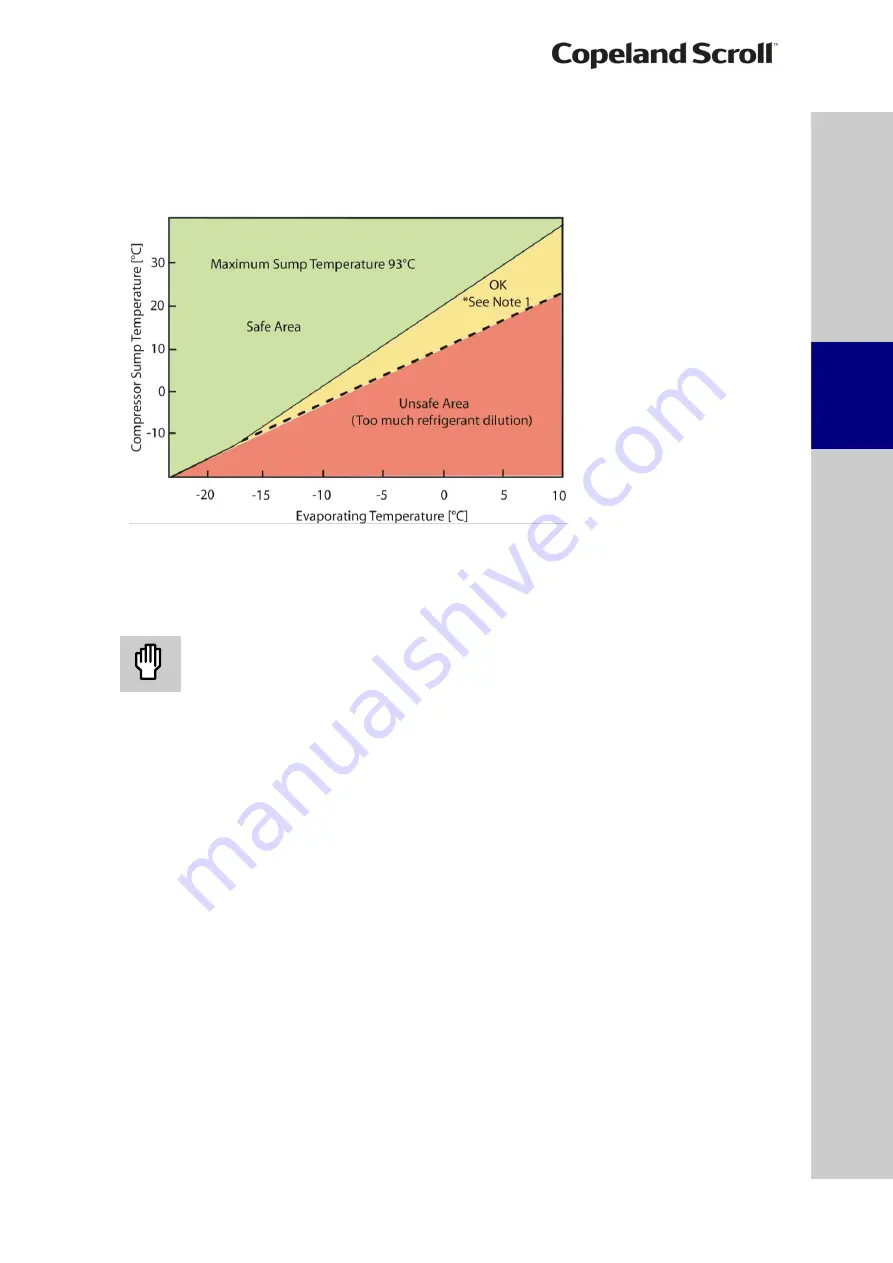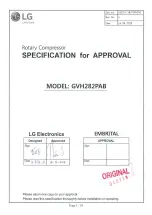
C6.2.26/1013-1116/E
11
orifice from plugging with system debris. Tests have shown that a small screen with a fine mesh
can easily become plugged causing oil starvation to the compressor bearings.
The size of the accumulator depends upon the operating range of the system and the amount of
subcooling and subsequent head pressure allowed by the refrigerant control. System modelling
indicates that heat pumps that operate down to and below -18°C will require an accumulator that
can hold around 70% to 75% of the system charge.
Figure 6: Dilution chart for transient operation (tb = bottom shell temperature; te = evaporating temperature)
Note 1: Low load operation may be acceptable in the yellow marked area. Please contact
the Application Engineering department at Emerson Climate Technologies.
3.4 Screens
CAUTION
Screen blocking! Compressor breakdown!
Use screens with at least
0.6 mm openings.
The use of screens finer than 30 x 30 mesh (0.6 mm openings) anywhere in the system should
be avoided with these compressors. Field experience has shown that finer mesh screens used
to protect thermal expansion valves, capillary tubes or accumulators can become temporarily or
permanently plugged with normal system debris and block the flow of either oil or refrigerant to
the compressor. Such blockage can result in compressor failure.
3.5 Mufflers
External mufflers, normally applied to piston compressors in the past, may not be required for
Copeland Scroll compressors.
Individual system tests should be performed to verify acceptability of sound performance. If
adequate attenuation is not achieved, use a muffler with a larger cross-sectional area to inlet
area ratio. A ratio of 20:1 to 30:1 is recommended.
A hollow shell muffler will work quite well. Locate the muffler at minimum 15 to maximum 45 cm
from the compressor for the most effective operation. The farther the muffler is placed from the
compressor within these ranges, the more effective. Choose a muffler with a length of 10 to
15 cm.
3.6 Reversing valves
Since Copeland Scroll compressors have a very high volumetric efficiency their displacements
are lower than those of equivalent capacity reciprocating compressors. As a result, Emerson
Climate Technologies recommends that the capacity rating on reversing valves be no more than
1.5 to 2 times the nominal capacity of the compressor in order to ensure proper operation of the
reversing valve under all operating conditions.
The reversing valve solenoid should be wired so that the valve does not reverse when the
system is shut off by the operating thermostat in the heating or cooling mode. If the valve is
allowed to reverse at system shut off, suction and discharge pressures are reversed to the
S
afet
y
inst
ru
ctio
n
s
P
ro
d
u
ct
d
es
cr
ipt
ion
Inst
all
atio
n
E
lec
tr
ica
l
c
o
n
n
ec
tion
S
tar
ting
up
&
o
p
er
atio
n
Ma
int
enan
c
e
&
repai
r
T
ro
u
b
le
-
sho
o
ting
Dismant
ling
&
d
ispo
sa
l
Ref
er
en
ce
s















































